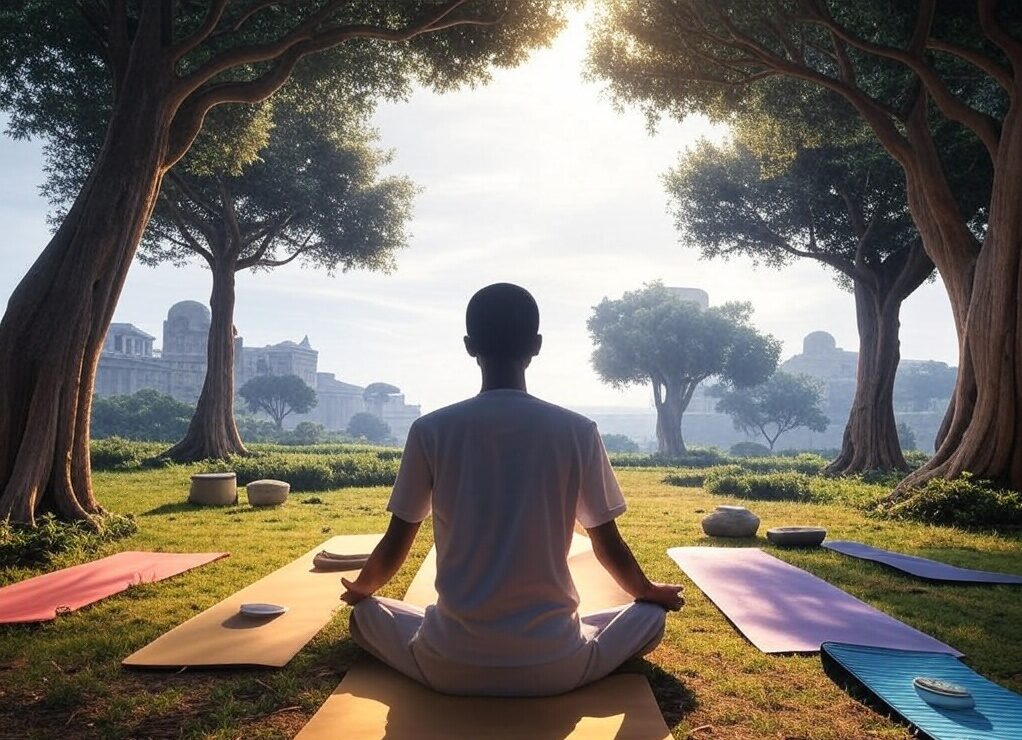
In the early 2000s, a team of researchers descended on the Japanese island of Okinawa, where the average life expectancy hovers near 84—a full decade longer than in the United States. They expected to find cutting-edge medical clinics or futuristic wellness tech. Instead, they met 102-year-old Ushi Okushima, who spent her mornings tending to a seaweed farm and her afternoons playing traditional Okinawan folk songs on the sanshin. When asked her secret, she shrugged: “I wake up with the sun, eat what the ocean gives me, and laugh with my friends.”
Ushi’s answer reveals a paradox: the healthiest people on Earth aren’t tracking their steps or counting macros. They’re not buying organic kale or Peloton bikes. They’re living in ways that seem almost antithetical to modern wellness culture. Yet as chronic disease rates soar in cities like New York and London—where gyms outnumber grocery stores and “biohacking” is a verb—Okinawa’s elders thrive. What if the art of living a healthy life isn’t about optimization, but about unlearning what we’ve been sold?
Consider Sardinia, another “Blue Zone” where centenarians outnumber teenagers. Shepherds there traverse mountainous terrain daily, their diets rich in sourdough bread, pecorino cheese, and cannonau wine. They nap without guilt, gather for multi-hour family meals, and measure wealth in relationships, not retirement accounts. Compare this to Silicon Valley, where tech executives microdose psychedelics and swap sleep-tracking data like baseball cards. A 2023 study in Nature found that despite access to the world’s best healthcare, Bay Area professionals report higher rates of burnout, insomnia, and metabolic syndrome than Sardinian shepherds. “We’ve conflated health with performance,” said Stanford epidemiologist Dr. Elena Martinez. “But longevity isn’t a productivity hack. It’s a byproduct of how we live.”
The disconnect begins with our plates. In Loma Linda, California—a Blue Zone anchored by a community of Seventh-day Adventists—meals are plant-based, minimally processed, and eaten slowly. Contrast this with the average American diet, where 60% of calories come from ultra-processed foods engineered to hijack our brains’ reward systems. A 2021 NIH study found that rats fed a diet mimicking modern processed foods ate 30% more calories than those eating whole foods, yet remained malnourished. “We’re starving ourselves on a cellular level,” said nutritional anthropologist Dr. Margaret Lee, “while drowning in empty calories.”
But food is only part of the story. In Nicoya, Costa Rica, villagers attribute their vigor to plan de vida—a sense of purpose that propels them into old age. A 95-year-old carpenter there still crafts furniture for his grandchildren; a 101-year midwife delivers babies. Meanwhile, in Seoul, South Korea—a city obsessed with anti-aging serums and 18-hour workdays—youth suicide rates have tripled since 2000. “We’ve medicalized health,” said philosopher Byung-Chul Han, “while ignoring the soul.”
The modern world’s greatest health innovation might be its most ancient: community. In Ikaria, Greece, elders live in multigenerational homes, sharing stories over herbal teas. Loneliness, by contrast, has been linked to a 50% increased risk of dementia and a 29% higher chance of heart disease. Yet urban planners prioritize condos over courtyards, and apps replace face-to-face connection with algorithmic “engagement.” A 2022 MIT study found that San Franciscans spend just 12 minutes a day in meaningful conversation—less than half the time spent scrolling TikTok.
This isn’t to romanticize poverty or dismiss medical advances. But it’s worth asking: Why do the world’s healthiest populations share habits that modernity deems outdated? The Sardinians move not to burn calories but to tend flocks. The Okinawans eat until they’re 80% full, a practice called hara hachi bu, not because they’ve read a diet book but because their ancestors did. The Adventists fast weekly not for “metabolic reset” but for spiritual clarity.
Perhaps the secret lies in what anthropologists call “embodied tradition”—practices so woven into daily life they don’t require apps or willpower. When Dutch researchers tried to replicate Blue Zone habits in a Rotterdam suburb, they failed. Participants rebelled against prescribed vegetable quotas and scheduled social hours. “Health can’t be outsourced to trackers or therapists,” said lead researcher Dr. Lars van der Post. “It has to emerge from culture.”
So where does this leave us? Cities won’t revert to agrarian villages, nor should they. But we might borrow from the past. Tokyo’s “forest bathing” trend—prescribing time in nature to reduce stress—echoes Okinawan elders who’ve gardened daily for decades. Denmark’s co-housing communities, where families share kitchens and childcare, mirror Ikaria’s village squares. Even Silicon Valley is flirting with change: Tech giants now hire “longevity chefs” to design office meals around Blue Zone principles.
The art of living a healthy life, it seems, isn’t a puzzle to solve but a rhythm to rediscover. It’s waking with purpose, eating with intention, moving with joy, and resting without guilt. As Ushi the seaweed farmer might say: Health isn’t something you chase. It’s something you live.
Final Thought:
What if the road to longevity isn’t paved with quantum leaps in science, but with a return to the ordinary, unhurried rhythms that have sustained humans for millennia?

